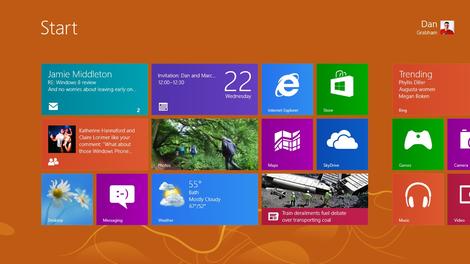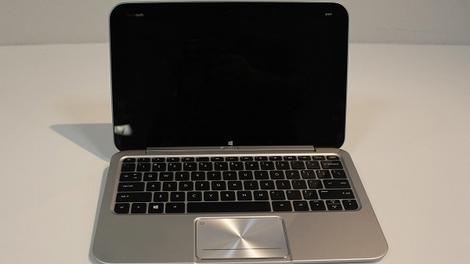Techradar - All the latest technology news
U.S. Cellular to start selling Galaxy Note 2 Oct. 26

U.S. Cellular got announcement happy when it initially let out it would carry the Samsung Galaxy Note 2. The carrier was the first to open pre-orders, though it won't be the first to start selling the device.
That honor goes to T-Mobile, however Verizon may soon join T-Mo in offering up the device Wednesday.
U.S. Cellular, on the other hand, will start selling the device Oct. 26, the company reportedly announced, at the same price as everyone else: $299.99.
The price includes a contract and gives users a 16GB 5.9-inch handset.
Go cellular
Customers can pick up the Note 2 either online or in U.S. Cellular stores starting Friday and those who already placed a pre-order should expect it to ship Thursday as well.
Bit by bit, carriers, pricing and availability has come out for the Galaxy Note 2, a 5.5-inch screened "phalet."
Samsung has been trotting the device across the globe, and will finally officially bring it to the U.S. during an event at 4 p.m. PDT.
Sprint will start selling the device Thursday, while AT&T customers must wait until Nov. 9. No word yet on when Verizon joins the phalet fun, but that could be known soon.
Analysts predict Android to overtake Windows as top OS in four years

Analysts predict that Windows will have some stiff competition for the dominant operating system in the next few years from an unexpected place.
According to research firm Gartner, Google's Android OS, not Apple's OS X or iOS, is on course to overtake Windows as the most used operating system in the world by 2016.
Currently, Gartner's data shows that there are only 608 million Android devices in use compared to 1.5 billion Windows machines.
However, by 2016 Gartner expects those numbers to flip, with as many as 2.3 billion Android devices surpassing a projected 2.28 billion devices running Windows.
A matter of mobile vs PC
While it's interesting that Android could be the top OS in four years, it's more interesting that Gartner decided to pit the Android mobile OS against Windows in the first place.
Even with the imminent launch of Windows 8, which will usher in a wide range of new smartphones and tablets, Windows is still primarily considered an OS for desktop and laptop computers.
Arguably, each operating system's primary devices serve different purposes, allowing for the possibility of co-dominance where each OS succeeds without competing for the same marketshare.
However, Gartner's data suggests otherwise. The research firm notes that worldwide PC shipments are on the decline, dropping 8 percent in the last three months alone, as more users turn to smartphones and tablets as their primary computer.
Microsoft's Surface tablet and Windows Phone 8 devices hope to bridge that gap, but the software giant's lackluster history with mobile platforms doesn't inspire confidence that it can gain significant ground against the well-established and widely available Android OS.
Technology is a fast-moving field though, making four year projections a tricky thing. Four years ago this month Android just launched with its very first handsets, and the market has changed considerably since that day.
HP lays out US Windows 8 device availability and pricing

With the Windows 8 launch approaching this Friday, Hewlett-Packard announced its full lineup of notebooks, desktops and tablets for Microsoft's new OS on Wednesday.
HP announced various new Windows 8 devices in the fall, including four new PCs announced in September, but Wednesday marked the first time the Palo Alto company revealed its entire upcoming and available lineup at one time.
That Windows 8 lineup features over a dozen notebooks, desktops and tablets, including the HP Envy x2, the HP SpectreXT TouchSmart Ultrabook and the HP Pavilion dm1.
Other previously announced and currently available devices, like the ElitePad 900, Envy Phoenix h9, and Elitebook Folio (click for a nifty gallery of the Folio, which will launch alongside Windows 8 on Oct. 26) were also part of the day's news.
HP's full Windows 8 array
HP's lineup of Windows 8 notebook PCs includes the HP Envy x2, "a powerful ultrathin hybrid PC" and the Pavilion Sleekbook 14 and Sleekbook 15 (priced to move, available in "sparkling black" and "ruby red").
Also part of the notebook team are the Envy m4, with "the perfect balance of mobility, performance and entertainment" and the Pavilion dm1, ultra-portable, which comes with up to 200MB of free data per month from T-Mobile.
HP also mentioned two upcoming Windows 8 Ultrabooks: the SpectreXT TouchSmart and the Envy TouchSmart.
The PC-maker separated its desktop computers into two categories: in consumer desktops it's got the HP Envy 23 and Envy 20 TouchSmart, both with 10-point multitouch technology.
Rounding out the consumer category are the HP SpectreOne ("thin and elegant"), the Pavilion 20 AiO (no touch functionality) and the Envy Phoenix h9 ("delivers a powerful computing experience").
HP's business desktops, on the other hand, include the ElitePad 900, "a true tablet for business that balances a beautiful design with enterprise-grade features," and the EliteBook Folio 9470m Ultrabook, "ultrathin, lightweight and efficient."
Pricing and availability breakdown
TechRadar realizes this is a big pond of products to wade through, so here's a breakdown of the pricing and availability for the products above.
- HP Envy x2: Nov. 14, $849.99
- HP SpectreCT TouchSmart Ultrabook: December, $1,399.99
- HP Envy TouchSmart Ultrabook 4: TBA, $799.99
- HP Pavilion Sleekbook 14: Out now, $499.99
- HP Pavilion Sleekbook 15: Out now, $579.99
- HP Envy m4 notebook: Out now, $899.99
- HP Pavilion dm1: Out now, $499.99
- HP Envy 23 AiO: Out now, $999
- HP Envy 20 TouchSmart AiO: Out now, $799
- HP SpectreOne: November, $1,299
- HP Pavilion 20 AiO: Out now, $449
- HP Envy Phoenix h9: Out now, $899
- HP ElitePad 900: January, TBA
- HP EliteBook Folio 9470m: Oct. 26, $1,049
Apple tweaked iOS 6 to be better at detecting intentional touches

The new iPad mini has been a hot topic of conversation since its unveiling Tuesday alongside other Apple newcomers like the fourth-gen iPad, iMac and 13-inch MacBook Pro with Retina display.
Even though there are plenty of positives (adding Siri) and negatives (losing GPS in Wi-Fi versions) to the iPad mini, Apple has made sure the tablet still provides a great user experience.
Much has been made about the 7.9-inch screen having a larger surface area than other competitor tablets like the Kindle Fire HD and the Nexus 7.
However, to get that surface space, Apple had to trim the size of the bezel down a bit, which means users' hands will rest on the screen when holding the device in portrait.
Not to worry though, as Apple revealed it improved iOS 6 to be better at recognizing accidental touches on the outer edge.
Smaller and smarter
In making the iPad mini, Apple had to consider the size of the bezel along the side of the device.
Leaving it as large as those found on the iPad wouldn't give users as much screen space, and thus the iPad mini won't be able to replicate the iPad experience nearly as well.
Since the bezels are smaller, that means the odds of a user's hand resting on the screen increase when holding the device upright.
To alleviate the response of a thumb resting on the screen, Apple refined iOS to allow it to better detect the difference between resting and intentional touches.
Apple's design page for the iPad mini describes the new feature, saying, "iPad mini intelligently recognizes whether your thumb is simply resting on the display or whether you're intentionally interacting with it. It's the kind of detail you'll notice - by not noticing it."
It's the kind of feature that doesn't necessarily make the device more or less attractive, but does make it better for everyday use.


0 comments:
Post a Comment